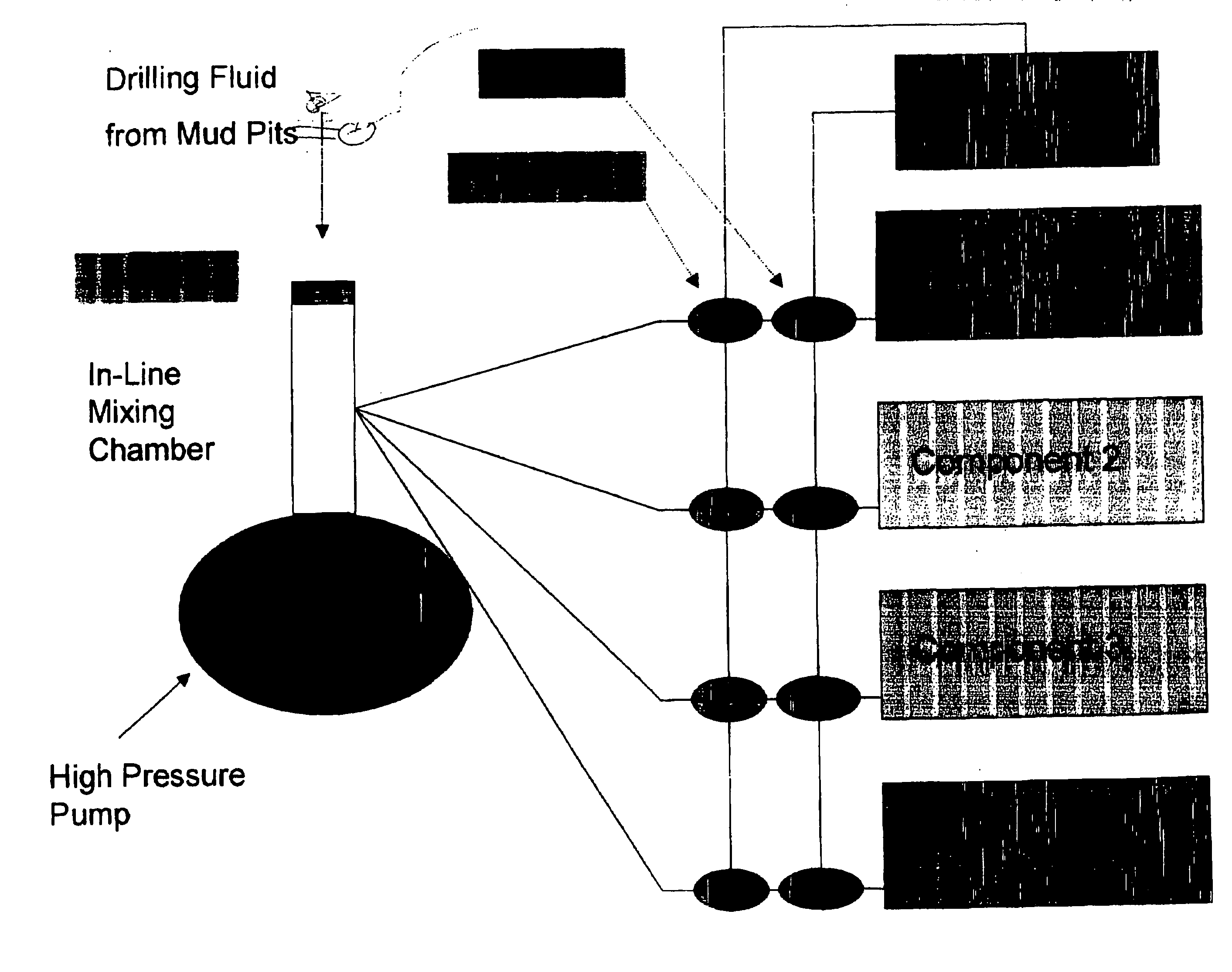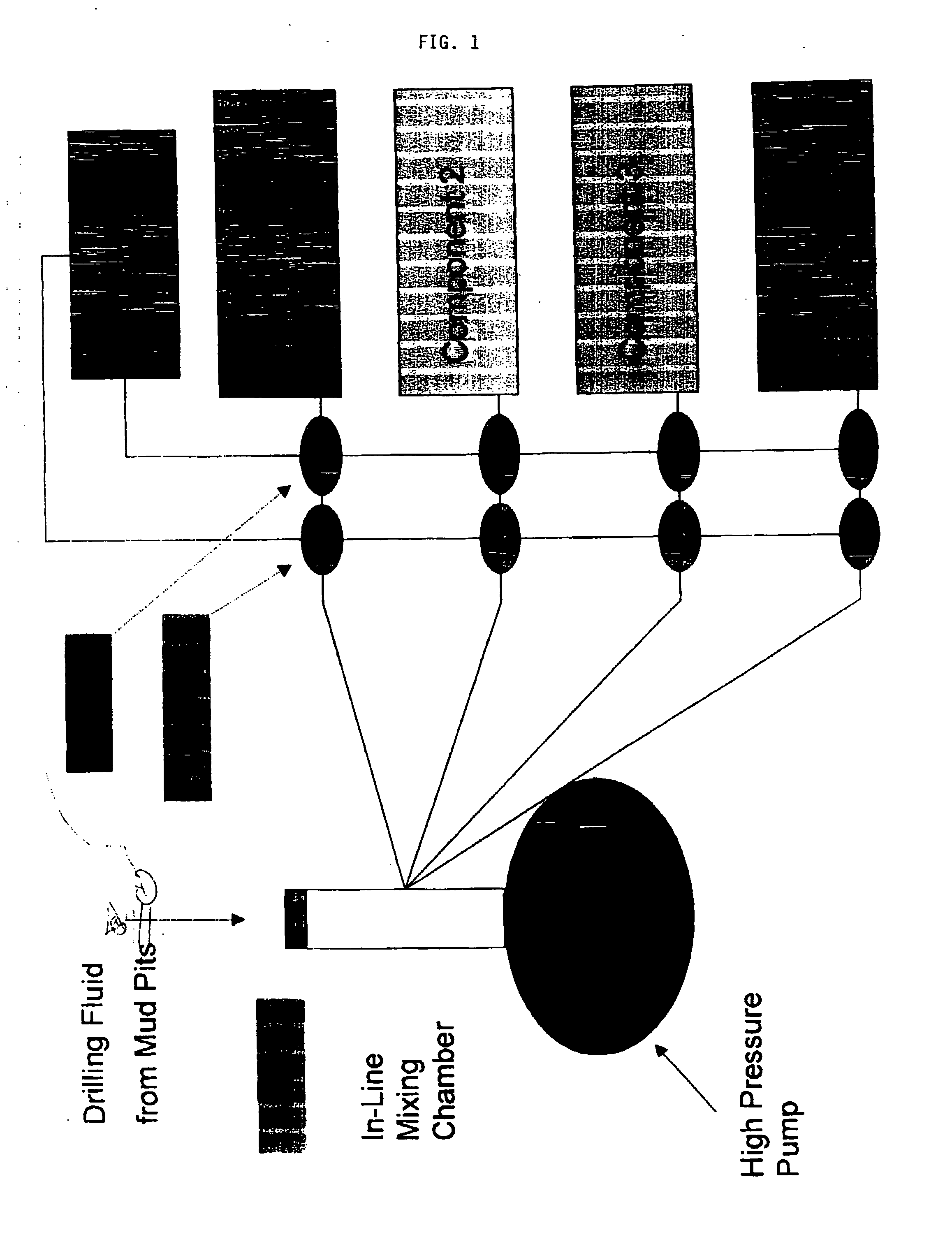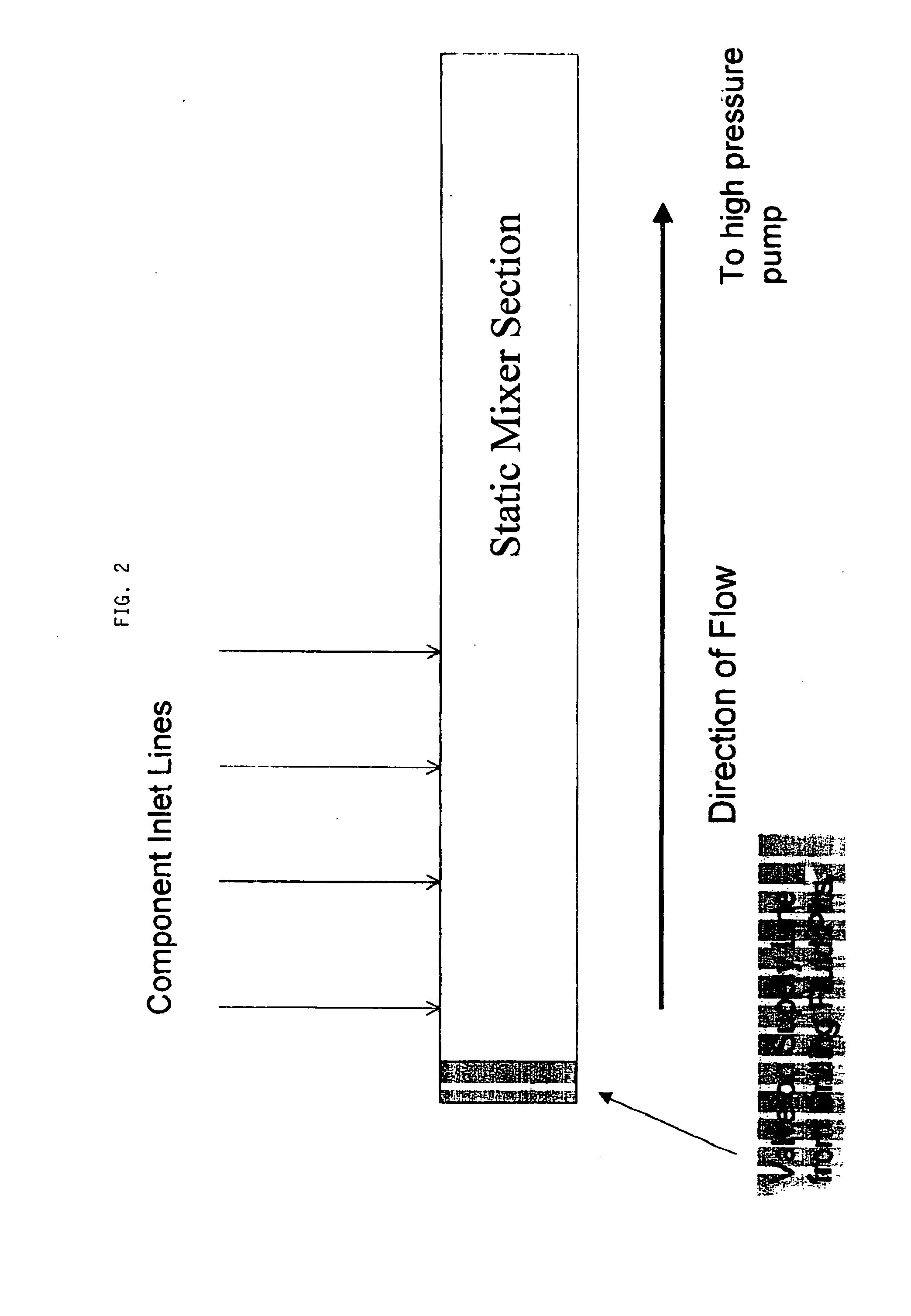Method and apparatus for performing chemical treatments of exposed geological formations
a geological formation and chemical treatment technology, applied in the field of methods, can solve the problems of disproportionately long time period, reduce the diameter of the borehole in subsequent sections, and increase the cost of curing, so as to achieve the effect of improving the material property valu
- Summary
- Abstract
- Description
- Claims
- Application Information
AI Technical Summary
Benefits of technology
Problems solved by technology
Method used
Image
Examples
examples 1-3
[0079] Examples 1 through 3 demonstrate the use in the field of the formulation utilizing at least one melamine-formaldehyde resin, or a blend of melamine-formaldehyde resins, optionally blended with a polyol and / or poly (hydroxy) ether, soluble in non-aqueous drilling fluids and invert emulsion drilling fluids containing C7 to C20 olefins, esters, paraffinic oils and blends thereof, and also soluble in diesel and mineral oils and blends thereof with C7 to C20 olefins, esters, and paraffinic oils; and optionally other additives selected from one or more of coupling agents, suspending agents, dyes, weighting agents, lost circulation materials, and other additives known in the art.
example 1
[0080] Multiple treatments were performed in seven wells having uncased wellbore intervals between the depths of about 9,000 feet and about 18,000 feet, in a southern Texas gas field. Static geothermal temperatures between about 235 to 320° F. were encountered in this depth range. Multiple geologic formations are exposed within this depth interval in these wells. A series of permeable sandstone formations separated by shale and silt intervals generally describes the exposed formations in the wellbore. Hydrocarbons, primarily gas, from some of the exposed sands have been produced from other wells in the field. Production has decreased the formation pore pressure of these formations and reduced their fracture initiation and propagation pressure. Other exposed, permeable, hydrocarbon-bearing sands have not been produced and are at their original formation pore pressure and corresponding higher fracture initiation and propagation pressures. In some cases the drilling fluid weight necess...
example 2
[0092] In Well No. 2 of this study, an exposed lower pressure (depleted) formation was fractured by a high drilling fluid weight required to control an exposed high-pressure zone. This caused lost circulation and prevented further drilling operations to deepen the wellbore. A resin-based lost circulation treatment was performed to repair the fractured formation. The formulation used for this treatment was:
[0093] Per finished (42 gallon) barrel of fluid:
13.4gallonsDiesel oil invert drilling fluid (16.8 lb / gal)16.8gallonsResimene 755 Melamine-Formaldehyde Resin4.2gallonsEthylene glycol monobutyl ether328.3poundsHematite7.65poundsFormic acid catalyst (88%)5poundsMagma Fiber Regular (Large fiber lost circulationmaterial)5poundsMagma Fiber Fine (Small fiber lost circulation material)
The original drilling fluid weight was 16.8 lb / gal. Addition of the melamine-formaldehyde resin, ethylene glycol monobutyl ether solvent and catalyst reduced the solution weight. Hematite (iron oxide) was...
PUM
| Property | Measurement | Unit |
|---|---|---|
| elongation percent at failure | aaaaa | aaaaa |
| elongation at failure | aaaaa | aaaaa |
| density | aaaaa | aaaaa |
Abstract
Description
Claims
Application Information
 Login to View More
Login to View More - R&D
- Intellectual Property
- Life Sciences
- Materials
- Tech Scout
- Unparalleled Data Quality
- Higher Quality Content
- 60% Fewer Hallucinations
Browse by: Latest US Patents, China's latest patents, Technical Efficacy Thesaurus, Application Domain, Technology Topic, Popular Technical Reports.
© 2025 PatSnap. All rights reserved.Legal|Privacy policy|Modern Slavery Act Transparency Statement|Sitemap|About US| Contact US: help@patsnap.com



